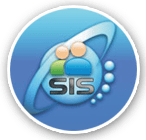These tools are invaluable, particularly for young learners, who may easily succumb to distractions. From traditional blackboards to cutting-edge digital applications, teaching aids serve a dual purpose: they make learning enjoyable and maintain student focus. Here's an in-depth exploration of the various types of teaching aids and their critical roles in education.
Table of Content
• What Are Teaching Aids?
• Types of Teaching Aids
• Importance Of Teaching Aids
• Final Thoughts
What Are Teaching Aids?
Teaching aids are diverse materials and resources educators use to bolster student engagement and improve understanding of complex subjects. They encompass a broad spectrum of tools, from the traditional, such as textbooks and blackboards, to the modern, such as multimedia resources and interactive platforms. As technology advances, so do the aids, expanding into categories like audio, visual, mechanical, and audio-visual tools.
Types of Teaching Aids
Teaching aids can be broadly classified into the following categories, each with its unique attributes:
1. Traditional Teaching Aids:
• Blackboards: Enable teachers to illustrate concepts and work through problems in real time.
• Textbooks: Provide structured content and are the bedrock of curriculum-based learning.
• Flashcards: Useful for quick reviews and memorization.
• Maps and Globes: Aid in teaching geography and spatial awareness.
• Realia: Physical objects used in the classroom to improve comprehension of everyday items.
• Blackboards/Whiteboards: Used in 87% of classrooms for daily lessons.
• Textbooks: Over 20 million physical textbooks are still distributed annually in schools.
2. Visual Aids:
• Charts and Posters: Visualize information in an easily digestible format.
• Videos and Films: Offer dynamic content delivery for increased engagement.
• Diagrams and Graphs: Break down complex data into understandable visuals.
• Infographics: Combine images and data to create an informative and aesthetically appealing resource.
• Charts and Posters: Visuals can increase learning by up to 400%.
• Videos and Films: 65% of people are visual learners, indicating the impact of video-based teaching aids.
3. Hands-on Aids:
• Models and Puzzles: Allow tactile learning, often used in science and math, to explain structures and processes.
• Lab Kits: Provide practical experience in scientific experimentation.
• Manipulatives: Objects like blocks or beads that help in understanding mathematical concepts.
• Lab Kits: Studies show a 75% increase in understanding when students perform hands-on experiments.
• Manipulatives: 80% of teachers report higher student engagement when using manipulatives.
4. Technology-based Aids:
• Educational Software: Interactive programs that provide learning activities and simulations.
• Interactive Whiteboards: Enable interactive learning and can display a variety of multimedia resources.
• Tablets and Computers: Offer access to various educational apps and resources.
• Virtual Reality (VR): Creates immersive learning environments for advanced experiential learning.
• Educational Apps: Educational apps have increased by 90% in the past five years in classrooms.
• Interactive Whiteboards: 72% of educators noticed improved comprehension with interactive whiteboards.
5. Audio Aids:
• Recordings and Podcasts: Useful for language learning and auditory learners.
• Music and Rhymes: Can enhance memory and make learning enjoyable for young children.
• Podcasts: Educational podcast listenership has doubled in the last two years among students.
• Music: Incorporating music into learning can improve memory recall by up to 60%.
6. Audio-Visual Aids:
• PowerPoints and Slideshows: Combine visual and audio information for lectures or presentations.
• E-Learning Modules: Interactive online learning units that blend visuals, text, and sound.
• Webinars: Provide live or recorded instructional sessions accessible from anywhere.
• PowerPoints: Over 30 million PowerPoint presentations are created daily, with a significant portion for educational use.
• E-Learning: The e-learning market is expected to exceed $300 billion by 2025.
Importance Of Teaching Aids
Teaching aids are not just supplementary elements; they are integral to effective teaching and learning for several reasons:
• Enhance Engagement: Teaching aids capture students' attention, making lessons more appealing.
• Facilitate Understanding: They simplify complex subjects, enabling students to grasp difficult concepts quickly.
• Cater to Learning Styles: Different aids suit different learning styles—visual, auditory, kinesthetic, and read-write.
• Encourage Participation: Interactive aids foster a participatory environment where students are more inclined to contribute.
• Support Memory Retention: Aids like music and rhymes can improve retention through repetition and engagement.
• Bridge Theoretical and Practical Learning: Hands-on aids like lab kits connect theoretical knowledge with real-world applications.
• Attention Retention: Teaching aids can boost concentration by up to 50% in distracted learners.
• Conceptual Understanding: They translate abstract ideas into tangible concepts, enhancing comprehension by 73%.
• Accommodating Diverse Learning Needs: Teaching aids address the seven learning styles, fostering an inclusive educational environment.
• Promoting Active Learning: Interactive aids encourage 88% more student participation.
• Memory Enhancement: Aids can help in increasing retention rates by 42%.
• Real-world Application: 68% of students can apply theoretical knowledge practically through teaching aids.
Final Thoughts
The educational landscape is continuously evolving, and teaching aids have become indispensable in that transformation. By integrating a variety of teaching aids into daily lessons, educators can provide a holistic learning experience that caters to all students' needs.






